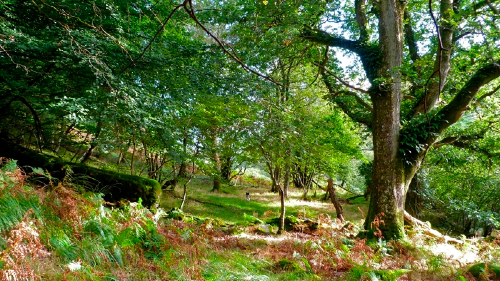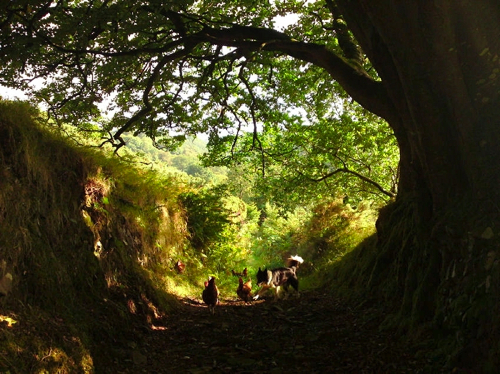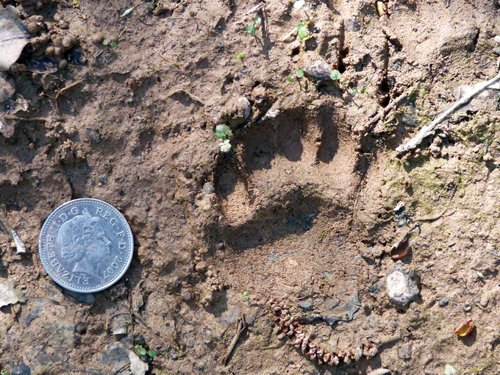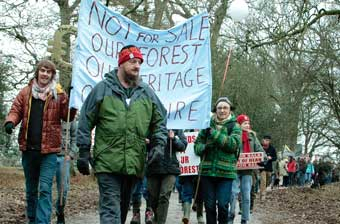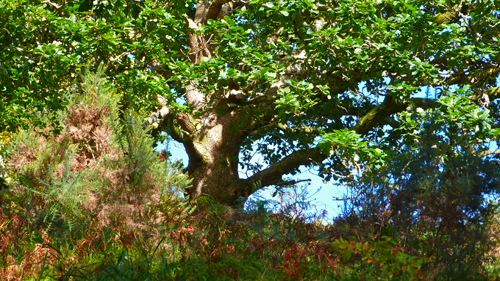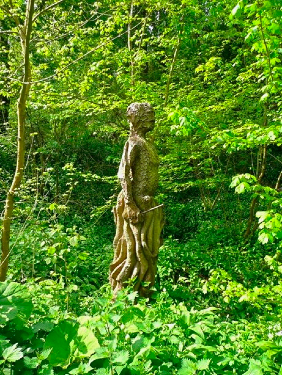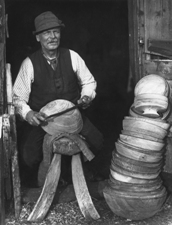Draft National Planning Policy Framework. What does it mean for small woodland owners and how you can respond to the consultation..
On 25th July 2011, the Draft National Planning Policy Framework (NPPF) was released. This could have implications for small woodland owners, particularly in the fields of protection for the environment, and for those owners seeking permission for storage sheds or other development in their woods.
The central core of the document is that there is a presumption in favour of sustainable development with Local Authorities encouraged to approve all individual proposals wherever possible. They are also required to have policies that show how this presumption will be implemented locally.
Development is centred around Local Plans, which should plan for prosperity (economic), people (social) and places (environment). Plans will be drawn up to cover all three areas, and approval given to any development that accords with the plan, or where the plan is absent, silent or indeterminate, or where policies are out of date.
Local plans need to consider housing, retail and commercial, transport, minerals, waste, energy, telecoms, water, health, security, community infrastructure and last on the list, mitigation of climate change and protection and enhancement of natural and historic environment. Neighbourhood plans on a smaller geographic level feed into these local plans, which feed into wider area strategic plans.
Business and Economy
Rural economic plans need to support sustainable growth of rural businesses and promote development and diversification of agricultural businesses, as well as support sustainable tourism. This could be welcome news to small woodland owners struggling to gain permission to develop a sustainable wood products or tourist and leisure business on their site.
But there are other things here of potential concern: local plans need to include plans for mineral extraction with an expectation that plans will give sufficient weight to this. Many woods (our own included) are sold without the mineral rights, so if your wood is included in the local mineral plan, it could be at risk.
Housing
The document makes clear more housing is needed, particularly in rural areas, so people can live in affordable housing in the community they want to live. This being so, all Local Authorities are being asked to identify potential sites for housing. However this is not a charter to build houses on rural land, or small woodlands, at least at first sight. Isolated homes in the countryside are to be avoided unless it can be shown to be essential for a rural worker to live near their place of work, or where the development would re-use redundant or disused buildings and enhance the local setting, or the development is of exceptional quality or innovative design.
Environment
Local Green Area designation was proposed in the White Paper on the Natural Environment, but in this document it is made clear that this can only be applied if it is close to a centre of population, demonstrably special to a community or its wildlife, where it is not extensive, and does not overlap with Green Belt. This seems to limit the designation to small urban parks or village greens/commons.
Green Belt legislation also comes in for a change: buildings for agriculture and forestry would be permitted, as would sports and recreation, modest extensions, replacement of buildings, and infilling on existing developed sites. Mineral extraction, infrastructure work, re-use of existing buildings and development under Community Right to Build orders are also to be allowed as will approved Community Forests.
“Green buildings” or developments will be encouraged, or even mandatory, and Local Authorities will be required to have a strategy for the development of renewable and low carbon energy sources, which could include sustainable wood fuel sources – potentially good for small woodland owners trying to establish a sustainable woodfuel business.
The document states that the planning system should enhance natural and local environment by protecting valued landscapes, minimising impacts on biodiversity (providing gains where possible) and preventing new or existing development from being affected by unacceptable levels of pollution, noise or land instability. So far, so good.
However, this does not necessarily protect valuable wildlife sites. Rather, Local Authorities each have to set out criteria against which they will weight the benefits of development against the potential damage to wildlife sites when considering development plans. They are encouraged to, but not obliged to, identify the areas of lowest value for wildlife and agriculture when identifying sites for development. Wildlife and habitats are to be given greater weighting in AONB’s and the Broads, but even there, developments can be approved if they are in the public interest.
Local planners need to have policies that address biodiversity at the landscape scale, identifying valuable habitats and ecological networks and the areas identified by Local Nature Partnerships for habitat restoration and creation. Now we get to the key bit of the document: the criteria for deciding whether to develop a site.
If “significant harm” cannot be avoided, mitigated or compensated for, then the plan should be refused, and plans where the objective is to conserve or enhance biodiversity will be permitted.
Planning permission should also be refused for development resulting in the loss of deterioration of irreplaceable habitats, including ancient woodland and veteran trees outside woodland, unless the need for, and benefits of, the development in that location clearly outweigh the loss. However the criteria for weighing these losses and benefits are not given. Statutory protection is only given to sites under the Birds and Habitats Directive, Special Protection Areas, Special Areas of Conservation, Ramsar sites and sites identified as areas to compensate for the above, or proposed such sites. Effectively, the only statutory protection is that afforded under international or EU legislation. British legislation or designations are not mentioned, including SSSI’s, Local Wildlife Sites, Sites of Importance for Nature Conservation and other current limited protection.
What does this mean for the woodland owner?
There are some positives: support for housing for rural workers may help genuine coppice workers to live in or near their woodland, and there is support for development of low carbon sustainable energy sources. But there is a lot to worry about too: woodland does not have statutory protection, or even the enhanced protection given to AONB’s or the Broads. It seems that if you want your wood protected from development, then it you will need to engage with the Local Nature Partnerships and Nature Improvement Areas, so that these are incorporated as valued habitat within the Local Plans. Even then, with the flexibility to change plans and weigh benefits, with a clear expectation that the highest priority will be given to economic and housing development, little protection is offered to woodlands, unless they are businesses generating sustainable fuel, or running a sports, recreation or tourism facility. Without protection or designation, many woods, including ancient woodland, seem vulnerable – more vulnerable than areas designated as future potential sites for mineral extraction under this document. Owning your own woodland may not be protection from mineral development, or compulsory purchase for houses, infrastructure, sports and recreation facilities or other local purposes.
This framework has been released before the outcome of the Independent Panel on the Future of Forestry in England (Forestry Panel) is delivered. Submissions to the Forestry Panel from the Woodland Trust, and others, suggest that ancient semi-natural woodland, and plantations on ancient woodland sites, should be granted highest level protection and development be prohibited. Clearly this would affect owners of such woodland, whether they are for or against development.
If you would like to have your say, there is a consultation open until 31st October:
Sarah Walters manages Alvcote wood and writes for the Small Woodland Owners Group Read how Sarah enables her local community to enjoy Alvcote Wood: http://saveourwoods.co.uk/articles/opinion/access-all-areas-by-sarah-walters/













